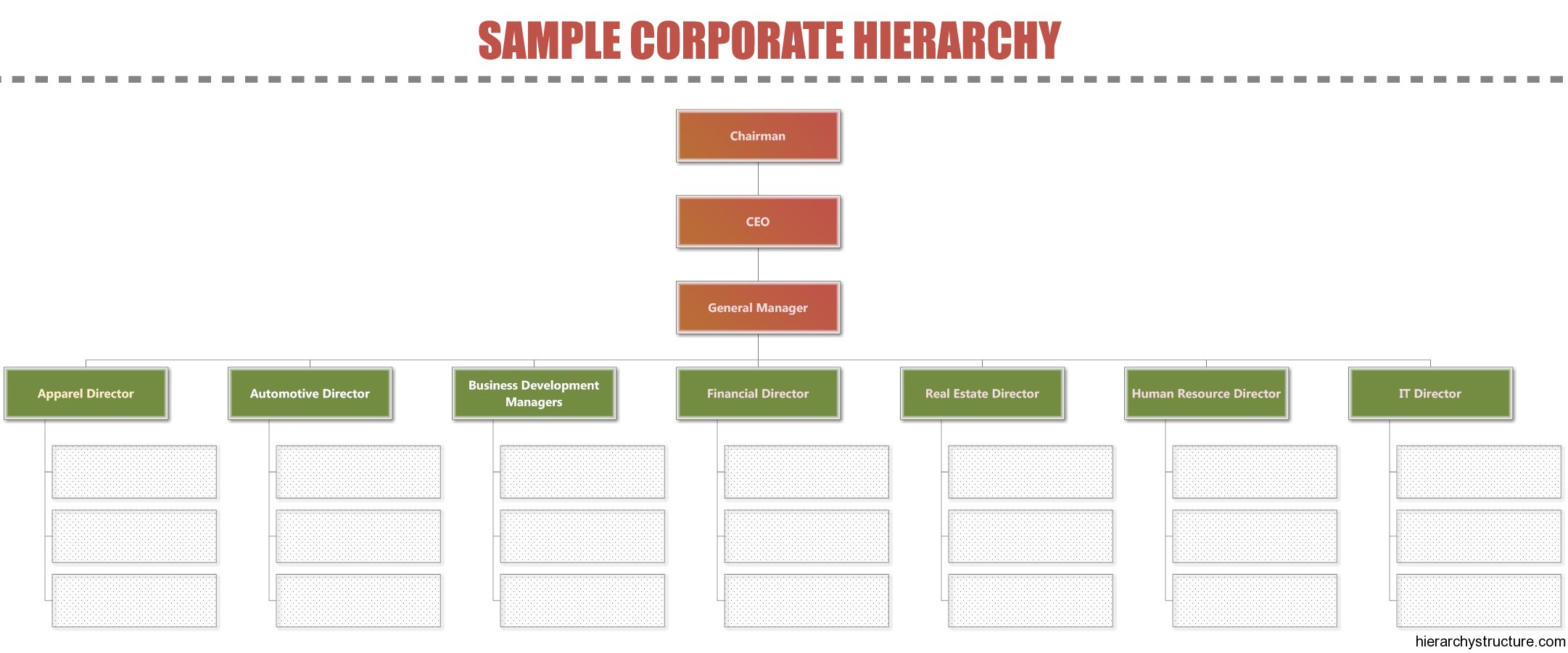Public corporations or the corporate organizations are typically organized in specific structures which are hierarchical in manner. This structuring in the form of hierarchy is done intentionally in order to establish certain policies, rules and ways of working. It also helps in attaining the business objectives for which the organizations are established by synchronizing the work at each level of the organization.
Hierarchies are preferred by the corporate organizations for the optimal utilization of resources, human resources and capital at all the levels of the organization. It is through the human power that other resources are used; therefore it is very important to structure this resource effectively in the organization. Let us consider a sample corporate hierarchy of an organization:
In this sample corporate hierarchy, the top most position is acquired by Chairman, followed by the Vice President of the organization. The officials in this upper group of corporate hierarchy are responsible for giving vision to the organization, and for creating a performance oriented environment.
Then is the Board of directors of the company who are responsible for taking higher level decisions of the organization. Their main responsibility is to ensure that the organization is going on the right path of growth & development. They are also responsible for hiring officials at executive levels like CEO etc.
Then for supervising, designing the policies, organizational goals and for step by step division of the vision of the organization to be achieved, these high level officers are hired – Chief executive Officer, general manager and deputy general manager of the organization. These highest level executives in the corporate environments are usually known as C-level or C-suite executives. This is because often the designations of high level executives start with the alphabet C, for example Chief Financial Officer, Chief Operations Officer, Chief Technical Officer, Chief Executive Officer etc.
Beneath this level the organizational hierarchy gets divided into certain sections and the officers heading the sections laterally share this level in the pyramidal structure of the organizational hierarchy. Various sections headed by their respective heads include Finance, IT, Business development & Promotion, Production, Sales, Insurance, International affairs, Credit Management, and HR department.
The officers leading these sections are known as managers, for example, finance manager, HR manager etc.
After the sectional division of the organization on the basis of various functions performed by it, comes the department wise distribution of each section. Each department is headed by the suitable professionals outlining the skills in these particular fields.
- The finance department gets divided into Accounts, Internal audit, Treasury etc. Business development & promotion departments get divided into Customer relation, Marketing, Corporate social responsibilities, Corporate planning & strategy.
- International affairs – Imports, exports, and Foreign Currency
- Sales – Purchase, Supplies and Distributors
- General affairs – Internal mail, Central clearing, Medical service, Construction & maintenance, Central cash etc.
All these sections are headed by the sectional heads and are constituted by employees holding specializations required for performing various tasks in these departments. Each department has its line of Managers, Assistant Managers who supervise the employees working in these departments.

